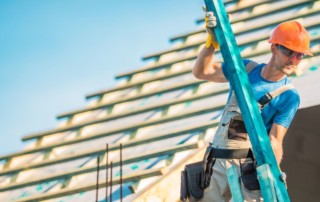Summer in Venice means hot, humid weather and lots of rain. These extreme weather conditions can have adverse affects on home and property if we are not properly prepared.
Before heading into the dog days of summer, you should check your roof ventilation and attic insulation to make sure they are ready for the season.
Roof Ventilation
Your roof and attic need to be properly ventilated in order to regulate the air temperature and guarantee that your home energy is as efficient as possible. Heat and moisture naturally want to rise, and vents allow these elements to be released.
Without proper ventilation, you may experience a variety of problems with your home:
- Increased energy costs
- Damaged roof system components
- Deterioration of insulation
- Water damage caused by condensation
- Dry rot to plywood decking due to extreme heat
- Rust corrosion of metal nails, straps and HVAC ducting clamps
- Mold and mildew
There are three types of ventilation systems most often utilized in Florida homes.
Ridge Vent: A ridge vent is a ventilation strip that is located along the ridge line of your house. Ridge vents work by allowing the hot air to escape up and out through small holes. They are popular choices not only for their effectiveness, but because they blend so easily into your home’s structure – and are barely visible from the ground. Ridge vents also reduce indoor air pollution, and alleviate many residential pest control issues.
Soffit Vents: A soffit vent is an intake vent in the soffit area of the home (under the eaves). Soffit vents provide attic venting at a lower portion of the roof deck, and are generally used in conjunction with other forms of venting such as ridge vents which expel the hot air. They are typically painted to blend in with the home and soffit.
Gable Vents: Gabled vents are louvered vents which allow air to be drawn out of the attic space but prevent rain and precipitation from flowing back into the home.
Proper Attic Insulation
Attic insulation is necessary to keep excessive hot, humid air from entering your home. Without proper insulation, your air conditioner will be forced to work harder and the energy efficiency of your home will be decreased.
It is important to check your insulation periodically to look for any deterioration caused by prior roof leaks or pest infestation. If your insulation needs to be replaced or replenished, call your local roofing contractor. We can help you with choosing the right R-value, the number which represents how well a certain type of material stops heat flow from one area to another. In hot climates such as South Florida, the target R-value is 30.
The most common types of insulation are:
- Fiberglass batt is the least expensive type of insulation, and is most often used in warmer climates where moisture is not a big problem. Made of fiberglass fibers, this product is sold in predetermined lengths and widths to fit in standard joint spacing. The rolls are lightweight, easy to move and easy to install.
- Rigid foam boards form an air barrier which basic fiberglass insulation does not. The boards do not fill gaps, but can quickly add another layer of insulation over the existing fiberglass batt insulation in an attic.
- Spray foam is currently one of the most popular and effective types of insulation. It is blown into place, making it the best choice for irregular shaped attics and sealing over air gaps.
- Blown-in insulation is essentially batt insulation that does not come on a roll. It is made primarily using fiberglass and cellulose, works great as a vapor barrier and stops most air gaps where it’s applied. It is more affordable than spray foam, while affording similar results.
For more information on preparing your attic ventilation and insulation for the Venice area summer, call the experts at Kingdom Roofing. We are here to help.




